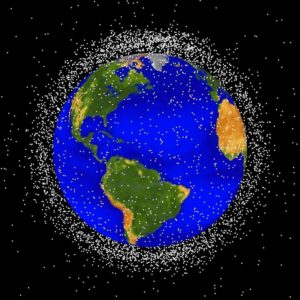 The aptly-coined “Space Race” of the late 1950s and entirety of the 1960s involved the United States, USSR, and several other powerful countries concluded some 50 years ago. In recent years, however, private companies like Elon Musk’s SpaceX have regenerated interest in traveling through space; Musk’s goal is to colonize Mars through SpaceX.
The aptly-coined “Space Race” of the late 1950s and entirety of the 1960s involved the United States, USSR, and several other powerful countries concluded some 50 years ago. In recent years, however, private companies like Elon Musk’s SpaceX have regenerated interest in traveling through space; Musk’s goal is to colonize Mars through SpaceX.
China has a reasonably well-respected space program, although its reputation has most certainly taken a substantial hit over the past year to 18 months. In June of 2016, China’s government-backed space program lost control of its space laboratory, which was and still is spinning in low Earth orbit.
Initially, Chinese government official claimed that the space lab was slated to crash into planet Earth’s surface, unable to burn up when reentering the atmosphere like small comets and meteors – and sometimes space debris that humans entered into low Earth orbit – sometime in late 2017. However, just months ago, Chinese officials working at its space program revised their inaccurate estimate to sometime in March 2018.
Guess What Month And Year It Is…
Lo and behold – it’s March 2018. Chinese space program leaders have shared that they still don’t have control over or computer contact with its formerly active space laboratory, Tiangong-1.
The European Space Agency, which isn’t directly affiliated with the Chinese space program, has been able to calculate a physical window that Tiangong-1’s 19,000 pounds’ worth of metal, hard plastics, and other materials that would certainly make it back down to planet Earth’s surface.
Just recently, the European Space Agency (ESA) has released official information regarding when and where the organization expects it will land.
Here’s What The ESA Has Come Up With – Let’s Hope The Calculation Is Accurate
Because Tiangong-1 is totally out of control, just like a rogue, runaway teenager who’s made at his parents. In the same way those parents couldn’t hope to determine what day that teenager would return home, experts at the ESA have no clue as to when exactly the former space laboratory will return to Earth.
However, we do know some information about its planned impact with the third rock from the Sun. The ESA’s leading scientists believe it will land between March 29 and April 9 of this year.
Tiangong-1 should land between 43º North and South latitudes, though that covers almost all of society. Scientists may be able to pinpoint its expected landing location up to six hours before impact.





